The 25 Most Endangered Primates
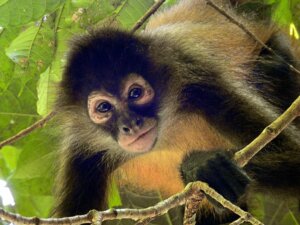
Every 2 years, the official list of the most endangered primates is revised, but it never seems to decrease. Although only 25 of them are covered in this article, more than half of the 633 species of primates that exist are in serious danger of disappearing.
Paradoxically – and although at this point it’s no longer surprising – the greatest threat to these mammals is the human being. Deforestation, poaching, and species trafficking are the activities that cause the death of most primates.
Purpose and history of the list
Primates in Peril is a publication that contains the list of seriously endangered primates. This list collects information on all the species, including their conservation status and the main threats they face.
Since the publication of the 2004-2006 report, its name changed to: Primates in Peril: The 25 most endangered primates in the world
The list was created in 2000 by the International Union for Conservation of Nature (IUCN), the International Primatological Society (IPS), and Conservation International (CI). Since then, the publication has been a joint project between the three conservation organizations. and is reviewed every two years.
The 25 most endangered primates
The latest revision of this list collects data from 2018 to 2020. In it, the most endangered primates are exposed by geographic region. 12 of them didn’t appear on the previous list, while another 8 entered it for the first time.
This 2018–2020 version contains 2 members of the genus Piliocolobus and another 2 of the Trachypithecus, with the intention of highlighting the serious threats that great primates are facing in their habitats. Below you can meet them all, region by region.
Madagascar
This island, the endemic home to lemurs, has one of the richest biodiversities in the world. Most of the animal species that live in it find their home under the dense vegetation covers of its forests, so the greatest threat to them is deforestation. The most threatened primates in this region are these:
- Microcebus manitatra or the Nosy Be mouse lemur: The genus microcebus is the smallest among the lemurs.
- Hapalemur alaotrensis or bandro.
- Lepilemur jamesorum – Also known as James’s sportive lemur, this small prosimian lives in a very small area of southeastern Madagascar.
- Indri indri: This is the largest species of lemur and, unlike many of them, it has strictly diurnal habits. It’s the only lemur that sings.
- Daubentonia madagascariensis or aye aye: Its long fingers and large yellow eyes have given rise to a multitude of legends among the aborigines of Madagascar. It’s believed that it gave rise to the name ‘lemur’, which means ‘night spirit’.
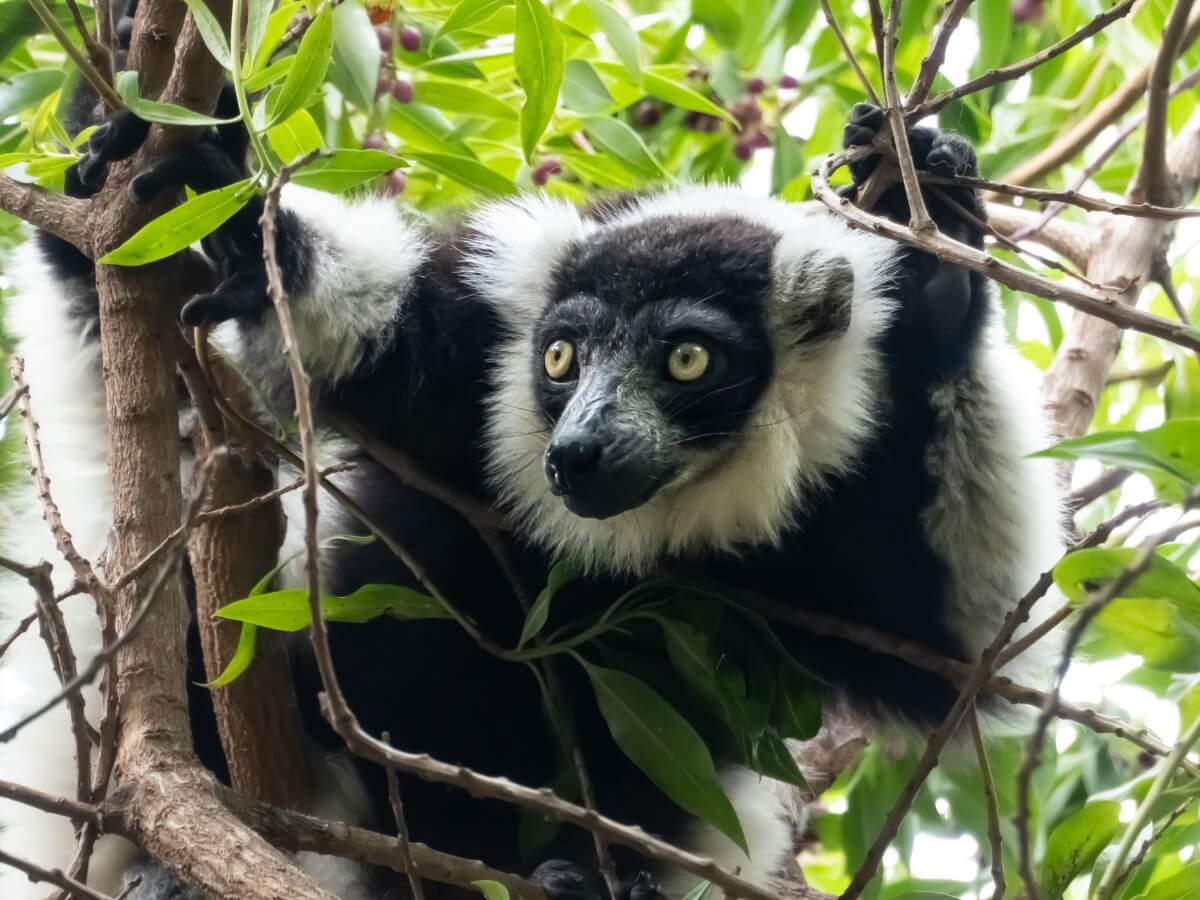
Most endangered primates in Africa
Old World primates, characterized by being plantigrade and having 5 fingers, also suffer from human intervention. The predominant threats here are poaching and species trafficking. The species included in the list are these:
- Paragalago rondoensis or Rondo’s gálago: This small arboreal primate, capable of leaps of more than 2 meters, suffers especially as a result of the deforestation of the forests of Tanzania.
- Cercopithecus roloway – The Roloway monkeys, with their curious beard, also suffer from human actions, living in a small area east of the Ivory Coast.
- Rungwecebus kipunji: The kipunji, known for its curious, bark-like call, has been on the list since 2008.
- Colobus vellerosus or ursine colobus: Its greatest threat is that its habitat is close to a large human settlement.
- Piliocolobus epieni or red colobus of the Niger Delta: Hunting for their meat and the deforestation of the forests in the area that gives it its name are destroying their populations.
- Piliocolobus rufomitratus or red colobus from the Tana River.
- Pan troglodytes verus or western chimpanzee: This is the species – along with the bonobo – that is closest to the human being, genetically speaking.

Asia’s most endangered primates
Perhaps the best-known primate in this region is the orangutan. However, many other species are threatened, as you can see below:
- Nycticebus javanicus: The slow loris is another of the best known, especially for its adorable appearance and its ability to produce venom in the glands near its armpits.
- Simias concolor or pig-tailed langur, named as such for being the only ape in the Colobinae family that has a short tail.
- Trachypithecus poliocephalus, or white-headed langur: Its population has decreased by 80% in 3 generations.
- Trachypithecus geei: Also known as the golden langur, it is considered sacred in the Himalayan regions.
- Semnopithecus vetulus or purple-faced langur.
- Hoolock tianxing – Discovered in 2017, it was named the hoolock Skywalker gibbon after the character from Star Wars.
- Pongo tapanuliensis or Tapanuli orangutan.
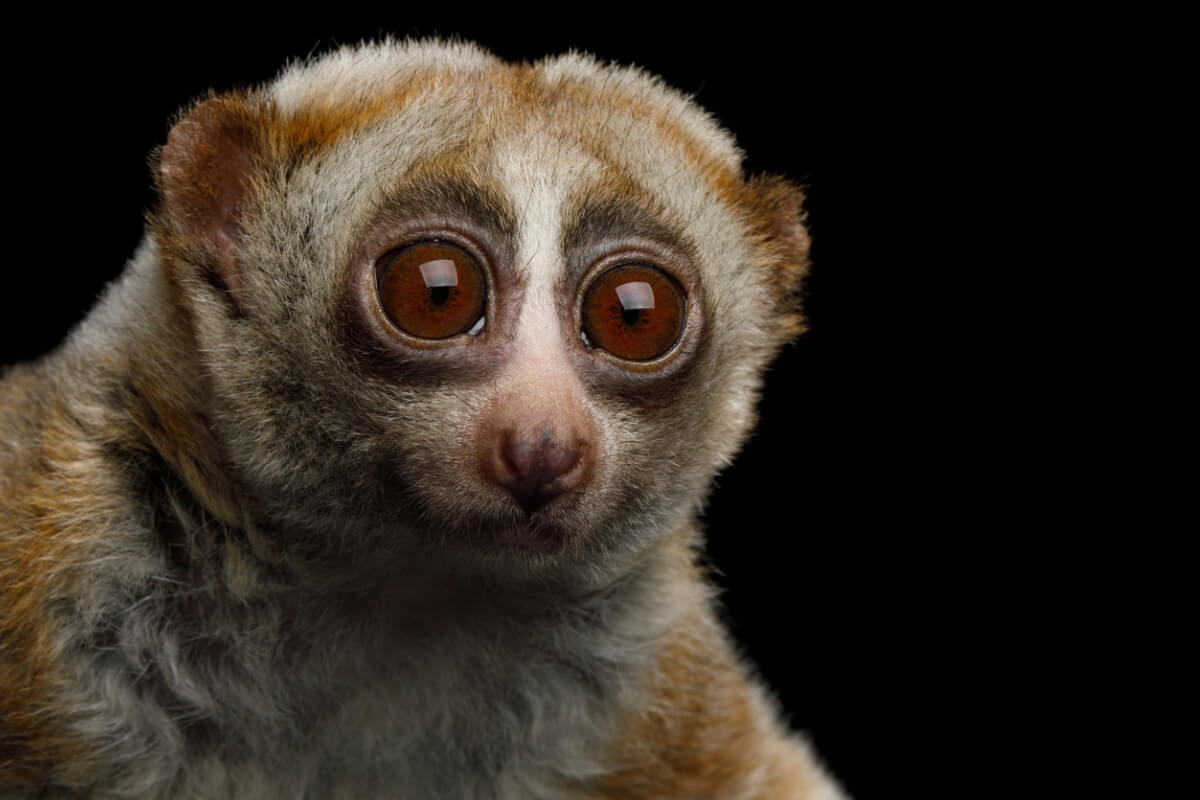
Neotropics
The Neotropics is a term used in biogeography to identify the tropical region of the American continent. It includes almost all of South America, Central America, the Antilles, part of the United States and part of Mexico. The following endangered species are found in this area:
- Callithrixaurita or white-eared marmoset.
- Saguinus bicolor or bald tamarin, named for the lack of hair on its head.
- Cebus aequatorialis or Ecuadorian capuchin monkey.
- Plecturocebus olallae: Also known as the Olalla marmoset, it’s another of the primates that especially suffer from habitat loss and hunting.
- Alouatta guariba, or brown howler: Yellow fever and its capture for species trafficking add to the reduction of its habitat.
- Ateles geoffroyi or Geoffroy’s spider monkey: This is one of the largest New World primates and it inhabits most of Central America.
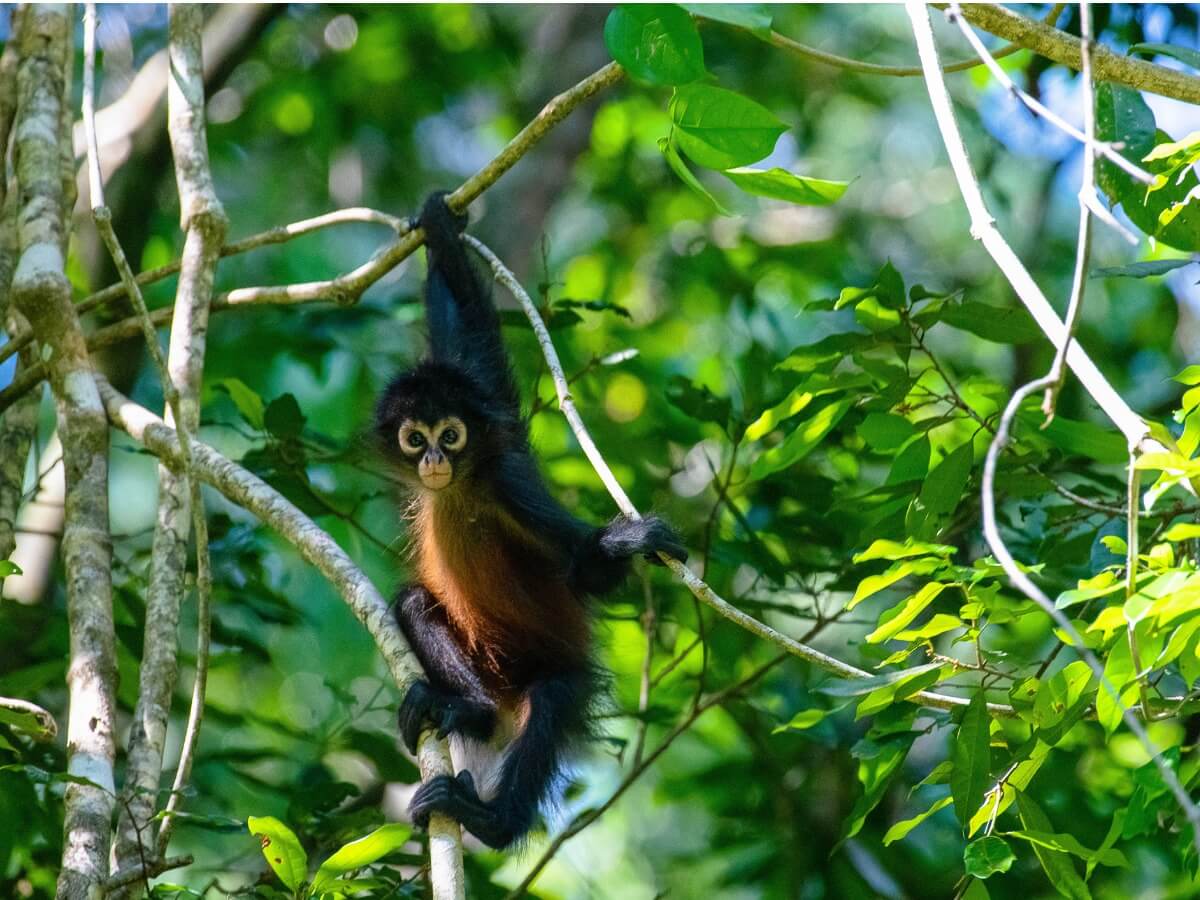
Other species included
In addition to the above mentioned, this list includes a last varied group of primates in greater danger of extinction:
- Gorilla beringei graueri, or Eastern gorilla.
- Macaca nigra, or Crested macaque.
- Presbytis chrysomelas, or Sarawak surili.
- Rhinopithecus avunculus, or Snub-nosed langur.
- Tarsius tumpara, or Tarsier from Siau Island.
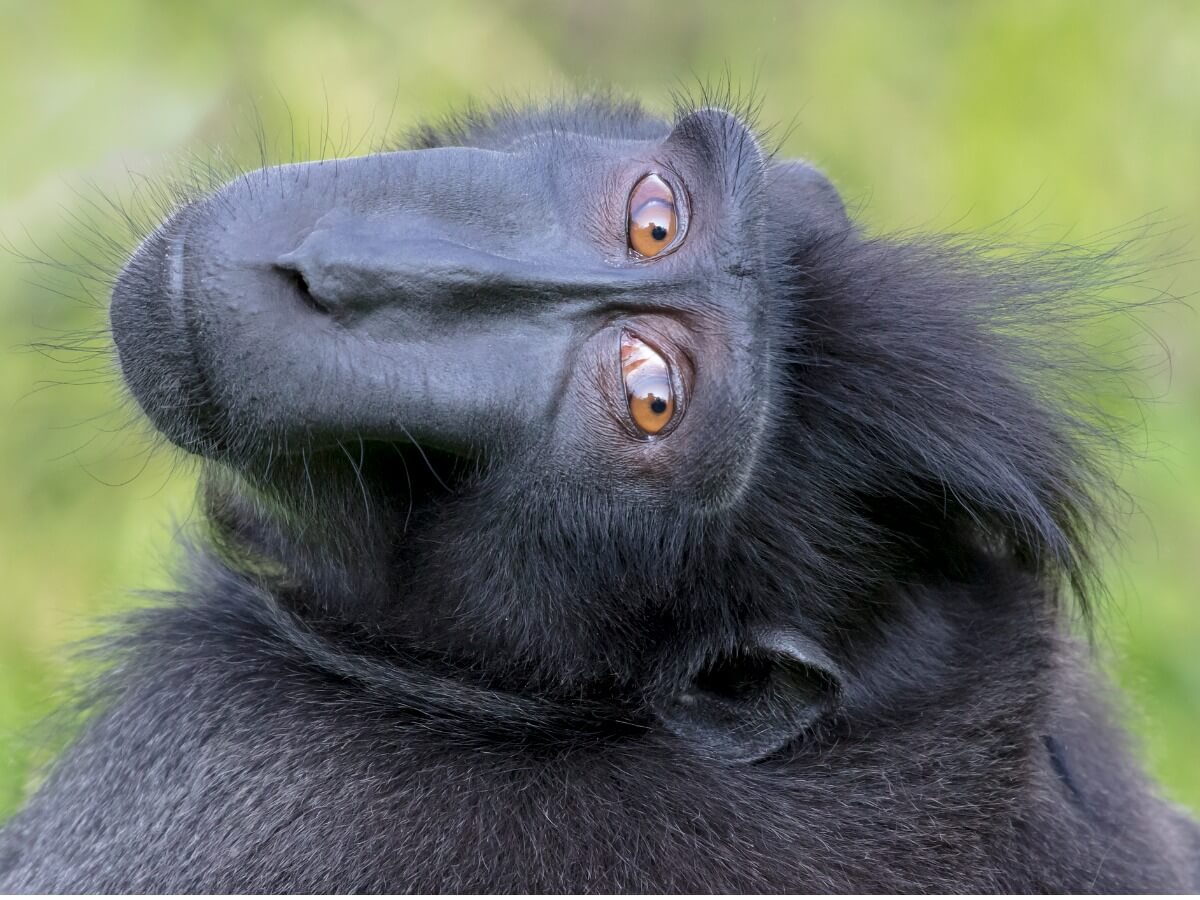
Impact of the list on the scientific and communication media
“What’s the use of making a list of the most endangered primates?” you may ask. The objective of this compilation isn’t only to put together a ranking, but it also aims to have a direct effect both in the scientific field and to inform the general public.
This study analyzed the impact of the list on the scientific and communication media. The results showed that the publications in the 25 most important scientific journals mentioned some of these species at least once.
On the other hand, in digital media (social networks, online newspapers, etc) it was found that, just one month after the publication of the list, the presence of keywords such as “top 25 primates” or “primates in danger” increased, as well as the common names of the 25 species included.
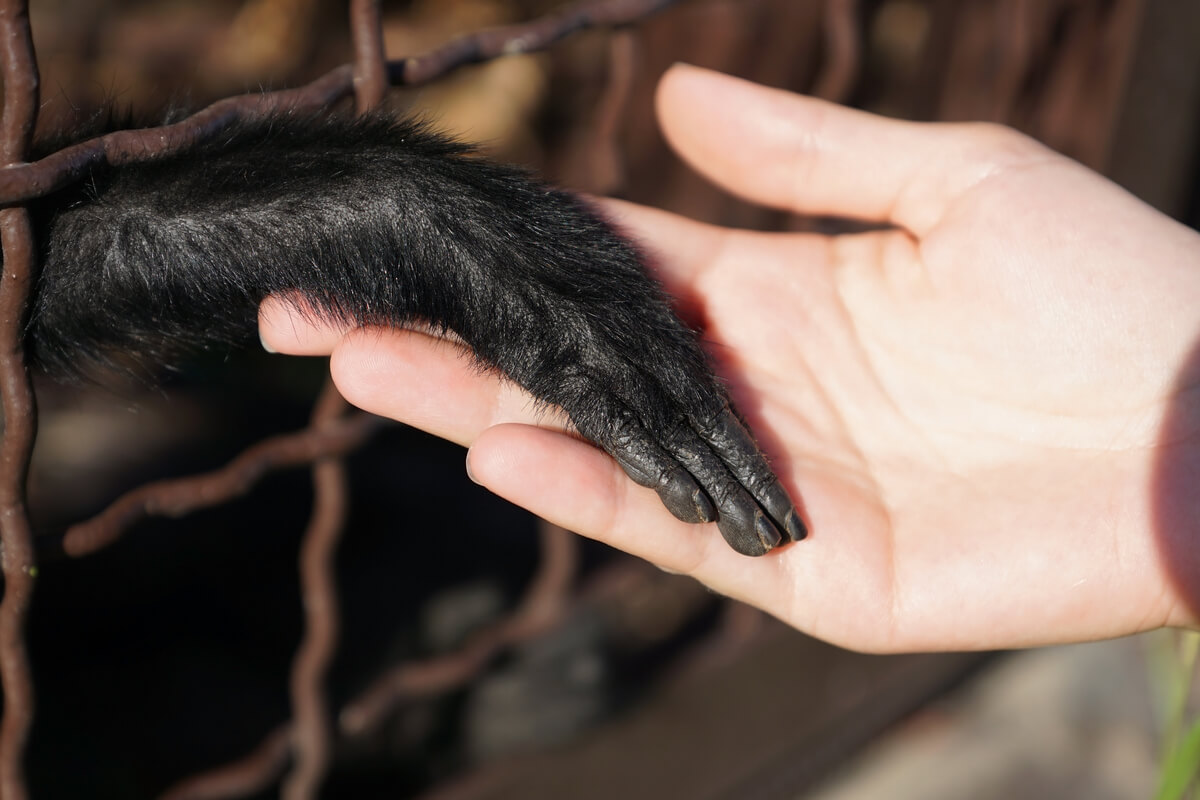
As you can see, these types of publications have great potential to bring to our attention species that are heading for extinction, especially those that people know very little about. This is just the first step in starting to protect them, or, at least, improving their situation.
Every 2 years, the official list of the most endangered primates is revised, but it never seems to decrease. Although only 25 of them are covered in this article, more than half of the 633 species of primates that exist are in serious danger of disappearing.
Paradoxically – and although at this point it’s no longer surprising – the greatest threat to these mammals is the human being. Deforestation, poaching, and species trafficking are the activities that cause the death of most primates.
Purpose and history of the list
Primates in Peril is a publication that contains the list of seriously endangered primates. This list collects information on all the species, including their conservation status and the main threats they face.
Since the publication of the 2004-2006 report, its name changed to: Primates in Peril: The 25 most endangered primates in the world
The list was created in 2000 by the International Union for Conservation of Nature (IUCN), the International Primatological Society (IPS), and Conservation International (CI). Since then, the publication has been a joint project between the three conservation organizations. and is reviewed every two years.
The 25 most endangered primates
The latest revision of this list collects data from 2018 to 2020. In it, the most endangered primates are exposed by geographic region. 12 of them didn’t appear on the previous list, while another 8 entered it for the first time.
This 2018–2020 version contains 2 members of the genus Piliocolobus and another 2 of the Trachypithecus, with the intention of highlighting the serious threats that great primates are facing in their habitats. Below you can meet them all, region by region.
Madagascar
This island, the endemic home to lemurs, has one of the richest biodiversities in the world. Most of the animal species that live in it find their home under the dense vegetation covers of its forests, so the greatest threat to them is deforestation. The most threatened primates in this region are these:
- Microcebus manitatra or the Nosy Be mouse lemur: The genus microcebus is the smallest among the lemurs.
- Hapalemur alaotrensis or bandro.
- Lepilemur jamesorum – Also known as James’s sportive lemur, this small prosimian lives in a very small area of southeastern Madagascar.
- Indri indri: This is the largest species of lemur and, unlike many of them, it has strictly diurnal habits. It’s the only lemur that sings.
- Daubentonia madagascariensis or aye aye: Its long fingers and large yellow eyes have given rise to a multitude of legends among the aborigines of Madagascar. It’s believed that it gave rise to the name ‘lemur’, which means ‘night spirit’.

Most endangered primates in Africa
Old World primates, characterized by being plantigrade and having 5 fingers, also suffer from human intervention. The predominant threats here are poaching and species trafficking. The species included in the list are these:
- Paragalago rondoensis or Rondo’s gálago: This small arboreal primate, capable of leaps of more than 2 meters, suffers especially as a result of the deforestation of the forests of Tanzania.
- Cercopithecus roloway – The Roloway monkeys, with their curious beard, also suffer from human actions, living in a small area east of the Ivory Coast.
- Rungwecebus kipunji: The kipunji, known for its curious, bark-like call, has been on the list since 2008.
- Colobus vellerosus or ursine colobus: Its greatest threat is that its habitat is close to a large human settlement.
- Piliocolobus epieni or red colobus of the Niger Delta: Hunting for their meat and the deforestation of the forests in the area that gives it its name are destroying their populations.
- Piliocolobus rufomitratus or red colobus from the Tana River.
- Pan troglodytes verus or western chimpanzee: This is the species – along with the bonobo – that is closest to the human being, genetically speaking.

Asia’s most endangered primates
Perhaps the best-known primate in this region is the orangutan. However, many other species are threatened, as you can see below:
- Nycticebus javanicus: The slow loris is another of the best known, especially for its adorable appearance and its ability to produce venom in the glands near its armpits.
- Simias concolor or pig-tailed langur, named as such for being the only ape in the Colobinae family that has a short tail.
- Trachypithecus poliocephalus, or white-headed langur: Its population has decreased by 80% in 3 generations.
- Trachypithecus geei: Also known as the golden langur, it is considered sacred in the Himalayan regions.
- Semnopithecus vetulus or purple-faced langur.
- Hoolock tianxing – Discovered in 2017, it was named the hoolock Skywalker gibbon after the character from Star Wars.
- Pongo tapanuliensis or Tapanuli orangutan.

Neotropics
The Neotropics is a term used in biogeography to identify the tropical region of the American continent. It includes almost all of South America, Central America, the Antilles, part of the United States and part of Mexico. The following endangered species are found in this area:
- Callithrixaurita or white-eared marmoset.
- Saguinus bicolor or bald tamarin, named for the lack of hair on its head.
- Cebus aequatorialis or Ecuadorian capuchin monkey.
- Plecturocebus olallae: Also known as the Olalla marmoset, it’s another of the primates that especially suffer from habitat loss and hunting.
- Alouatta guariba, or brown howler: Yellow fever and its capture for species trafficking add to the reduction of its habitat.
- Ateles geoffroyi or Geoffroy’s spider monkey: This is one of the largest New World primates and it inhabits most of Central America.

Other species included
In addition to the above mentioned, this list includes a last varied group of primates in greater danger of extinction:
- Gorilla beringei graueri, or Eastern gorilla.
- Macaca nigra, or Crested macaque.
- Presbytis chrysomelas, or Sarawak surili.
- Rhinopithecus avunculus, or Snub-nosed langur.
- Tarsius tumpara, or Tarsier from Siau Island.

Impact of the list on the scientific and communication media
“What’s the use of making a list of the most endangered primates?” you may ask. The objective of this compilation isn’t only to put together a ranking, but it also aims to have a direct effect both in the scientific field and to inform the general public.
This study analyzed the impact of the list on the scientific and communication media. The results showed that the publications in the 25 most important scientific journals mentioned some of these species at least once.
On the other hand, in digital media (social networks, online newspapers, etc) it was found that, just one month after the publication of the list, the presence of keywords such as “top 25 primates” or “primates in danger” increased, as well as the common names of the 25 species included.

As you can see, these types of publications have great potential to bring to our attention species that are heading for extinction, especially those that people know very little about. This is just the first step in starting to protect them, or, at least, improving their situation.
All cited sources were thoroughly reviewed by our team to ensure their quality, reliability, currency, and validity. The bibliography of this article was considered reliable and of academic or scientific accuracy.
- Schwitzer, C., Mittermeier, R.A., Rylands, A.B., Chiozza, F., Williamson, E.A., Macfie, E.J., Wallis, J. and
Cotton, A. (eds.). 2017. Primates in Peril: The World’s 25 Most Endangered Primates 2018–2020.
IUCN SSC Primate Specialist Group (PSG), International Primatological Society (IPS), Conservation
International (CI), and Bristol Zoological Society, Arlington, VA. 99 pp. - Acerbi, A., Kerhoas, D., Webber, A. D., McCabe, G., Mittermeier, R. A., & Schwitzer, C. (2020). The impact of the “World’s 25 Most Endangered Primates” list on scientific publications and media. Journal for Nature Conservation, 125794. doi:10.1016/j.jnc.2020.125794
This text is provided for informational purposes only and does not replace consultation with a professional. If in doubt, consult your specialist.








